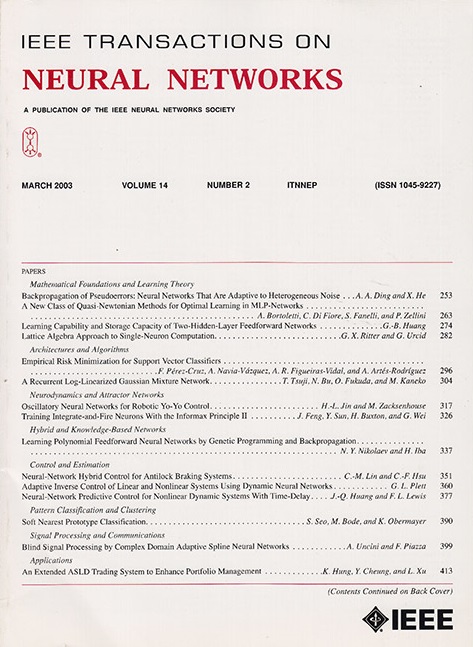Mars Express Orbiter Power Consumption Prediction Based on Bionic Hierarchical Learning Network.
IF 8.9
1区 计算机科学
Q1 COMPUTER SCIENCE, ARTIFICIAL INTELLIGENCE
IEEE transactions on neural networks and learning systems
Pub Date : 2025-09-25
DOI:10.1109/tnnls.2025.3611001
引用次数: 0
Abstract
Predicting power consumption for the Mars Express (MEX) mission is essential for optimizing its operational lifespan and mission assignments. However, the complexity of the Martian environment and the extended solar cycle obscure the periodicity of power consumption, making it difficult for existing methods to capture both intraperiodic and interperiodic features. This study introduces the bionic hierarchical learning network (BHL-Net) to enhance power consumption predictions. Leveraging 2-D frequency preprocessing and brain visual modeling techniques, BHL-Net mimics natural image encoding in the prefrontal cortex (PFC) to improve predictive performance. It incorporates a temporal oscillation activation module and a stripe intensity attention module to focus on local features, while a multihead attention adaptive aggregation module identifies key global features. Comparative experiments show that BHL-Net outperforms existing transformer-based models for MEX power consumption prediction. Ablation studies further validate the effectiveness of the FFT-based 2-D transformation and bionic attention framework. By emulating human brain response coding mechanisms, BHL-Net captures variations within and between complex cycles, providing a competitive solution for time series prediction in industrial applications.基于仿生层次学习网络的火星快车轨道器功耗预测。
预测火星快车(MEX)任务的功耗对于优化其使用寿命和任务分配至关重要。然而,火星环境的复杂性和太阳周期的延长掩盖了能量消耗的周期性,使得现有的方法很难捕捉到周期内和周期间的特征。本研究引入仿生分层学习网络(BHL-Net)来增强功耗预测。BHL-Net利用二维频率预处理和大脑视觉建模技术,模拟前额叶皮层(PFC)的自然图像编码,以提高预测性能。它结合了一个时间振荡激活模块和一个条纹强度注意力模块来关注局部特征,而一个多头注意力自适应聚合模块来识别关键的全局特征。对比实验表明,BHL-Net在MEX功耗预测方面优于现有的基于变压器的模型。消融研究进一步验证了基于fft的二维转换和仿生注意力框架的有效性。通过模拟人脑反应编码机制,BHL-Net捕获复杂周期内和周期之间的变化,为工业应用中的时间序列预测提供了有竞争力的解决方案。
本文章由计算机程序翻译,如有差异,请以英文原文为准。
求助全文
约1分钟内获得全文
求助全文
来源期刊

IEEE transactions on neural networks and learning systems
COMPUTER SCIENCE, ARTIFICIAL INTELLIGENCE-COMPUTER SCIENCE, HARDWARE & ARCHITECTURE
CiteScore
23.80
自引率
9.60%
发文量
2102
审稿时长
3-8 weeks
期刊介绍:
The focus of IEEE Transactions on Neural Networks and Learning Systems is to present scholarly articles discussing the theory, design, and applications of neural networks as well as other learning systems. The journal primarily highlights technical and scientific research in this domain.
 求助内容:
求助内容: 应助结果提醒方式:
应助结果提醒方式:


